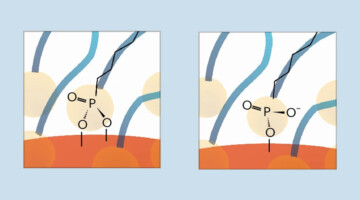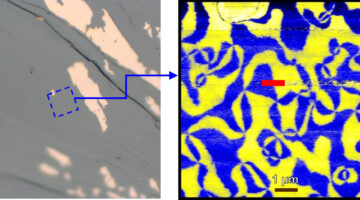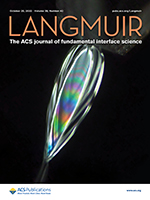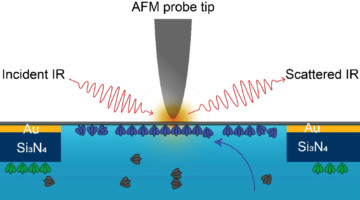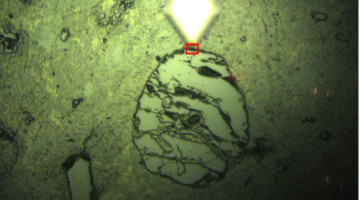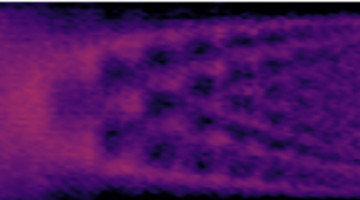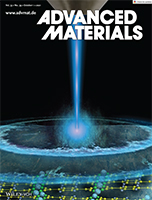Researchers studied samples from corals, mollusks, and sea urchins, at edges where mineral precursors start to form the new shell or skeleton. There, they found a surprise: corals and mollusks produced a mineral precursor that had never been observed before in living organisms or rocks, and had only recently been created synthetically. Read more »
Mechanics of a Floating Molecular Layer for CO2 Reduction
Researchers discovered how a layer of organic molecules on a nanoparticle surface detaches to create a highly catalytic pocket for reducing CO2 to CO. The ability to probe molecular-scale events under realistic conditions with nanometer resolution will help guide the design of responsive systems for a wide range of applications, from medicine to optoelectronics. Read more »![]()
![]()
Shedding Light on Sea Creatures’ Secrets
Exactly how does coral make its skeleton, a sea urchin grow a spine, or an abalone form the mother-of-pearl in its shell? A new study at the ALS revealed that this process of biomineralization, which sea creatures use to lock carbon away in their bodies, is more complex and diverse than previously thought. Read more »
Probing Walls between Electrically Polarized Domains
Researchers used infrared light to investigate the properties of the domain walls that separate electrically polarized (ferroelectric) regions in a rare-earth ferrite material. An understanding of domain-wall behavior is relevant to the development of advanced logic and memory applications for ultralow-power digital devices. Read more »![]()
![]()
Liquid Heterostructures: Generation of Liquid–Liquid Interfaces in Free-Flowing Liquid Sheets
Microscope image of a microfluidic nozzle producing a liquid heterostructure: a layered flat liquid sheet with outer toluene layers and an inner water layer. The colored bands arise from thin film interference, indicating the presence of buried liquid‒liquid interfaces and submicron layer thicknesses. Read more »
A Nano-IR Probe for Proteins in Liquid Environments
A new technique using infrared (IR) light revealed how the self-assembly of proteins is affected by environmental conditions in a surrounding liquid. This nanoscale probe of soft matter in a liquid matrix will facilitate advances in biology, plastics processing, and energy-relevant applications such as electrocatalysts and batteries. Read more »![]()
![]()
Nanoscale Infrared Study of Meteorite Mineralogy
Using a nanoscale infrared probe, researchers found that the minerals in a meteorite—an artifact representing the solar system’s past—were altered by water on very fine spatial scales. The work sheds light on conditions in the early solar system and lays groundwork for analyzing asteroid samples to be returned to Earth by NASA in 2023. Read more »![]()
![]()
Looking Inside a Battery with Infrared Light
Researchers have developed a new infrared methodology with unparalleled spatial and chemical imaging capabilities that helps to characterize processes at the interfaces between electrodes and electrolytes, with an eye toward bringing increased safety, lifetime, and energy density to the next-generation solid-state battery market. Read more »
Infrared Probe of Ultrahigh-Quality Nanoribbon Resonators
Researchers found that ribbon-like thin films, grown through a bottom-up, self-assembly approach, can act as ultrahigh-quality nanoscale resonators of lattice vibrations at infrared frequencies. These ultrathin nanostructures are ideal platforms for applications that harness infrared light, such as thermal emission and molecular sensing. Read more »![]()
![]()
Laser-Induced Cooperative Transition in Molecular Electronic Crystal
The cooperative tuning of a supramolecular electronic crystal enables access to a long-lived hidden conducting phase with a broad temperature range. Researchers demonstrate a dynamic and cooperative phase in K-TCNQ, with the control of pulsed electromagnetic excitation. A dedicated charge–spin–lattice decoupling is required to activate and subsequently stabilize the non-equilibrium phase. Read more »

